| Umělec magazine 2008/1 >> The History of Czech Art at a Glance II. Art after 1989 | List of all editions. | ||||||||||||
|
|||||||||||||
The History of Czech Art at a Glance II. Art after 1989Umělec magazine 2008/101.01.2008 Tomáš Pospiszyl | en cs de es |
|||||||||||||
|
This is the long-awaited continuation of the history of Czech modern and contemporary art from Umělec issue 3/2007.
In the last section we exposed the lives of artists who came under pressure from the Communist Party’s Central Committee. We found them in their warm, centrally-heated art studios. Now we will examine how the student revolt of 1989, an event that changed the lives of millions of workers and threw artists into a state of uncertainty, brought about both surprise and consternation. The reputed "breaking of the bread" will culminate in this issue, and the Gordian knot will finally be cut. Today, Tomáš Pospiszyl is a known popularizer of contemporary art. He also collaborated on the production of lauded publications that have shone light into the tunnel of Eastern Europe’s new culture. The publications, Promotional Documents and Sentimental Papers, are today perhaps the most practical guides for helping to orient oneself in the tangled roots of non-linear cognition. He was also recently the first to expose the bitter truth about the non-existent Slovene philosopher, Slavoj Žižek: a figure invented by the artistic group, Irwin. A member of the group, chosen by random drawing, takes to the stage under this assumed philosophical identity. The person wears a fake Freud-like beard and makes populist Marxist-Cimrmanesque pleas. In protest against the failure of his project to gain entry at the Venice Biennale—a death-metal pavilion—Tomáš Pospiszyl today lives in an ivory barrel on the outskirts of Giardini. Ivan Mečl Reckoning with the Past In December 1989, it was clear who won the Cold War. No one wanted to be on the losing side, and so a several-day festival to celebrate the end of one civilization began. The middle-aged generation of artists finally gained satisfaction. Two decades of their lives now finally made sense and had been justified. Artists could now begin to live normally and to create as was commonly done in the West. Borders flew open and Czech art could now show itself to the world. All could have been done otherwise and better. Space opened up for the righting of past wrongs in the structuring of State institutions. One could freely open new galleries. Art criticism and theory no longer faced barriers from the powers that be. A number of possibilities sprang up in 1989 and they exist still today. Once opened to the world, it began to become clear who artists had copied their work from and how many local star artists shamelessly copied their foreign idols. In a number of cases, many Czech artists did not even know they were doing so, not to mention world artists. The works of Karel Miler, Hugo Demartini, Stan Filek, Theodor Pištěk, Zorka Ságlová, Vladimír Havlík and others had already been made by someone somewhere else. The only artist not to have copied and to have remained truly his own was Zdeněk Beran. It also became clear how many works of art came about thanks to the help of so-called “covers.” A large part of artistic production during the 1980s belonged to the hard-working Jiří Sozanský, who in 1991 moved to Slovakia with Egon Bondy. There, they continued their work as part of the underground movement. After 1989 the artistic community came to terms with the remains of the Communist regime. The property of the Artists’ Union (Svaz výtvarných umělců) was divvied up among the most important members. Its real estate assets were either sold off or privatized. This helped acquire capital. In 1991, Milena Slavická, Ludvík Hlaváček and Karel Srp founded the magazine, Výtvarné umění (Visual Arts). This 80-page color magazine remains in print today with six issues a year, and has become a generally-respected platform for critique and discussion. Its summer issue tends to include a rich literary inlay. Identity, Intimacy, Impertinence The hard-headed, most significant generation of the second half of the 1980s could, after 1989, travel and confront their post-modern mythical ideas of exotic lands with the reality of recreational centers and half-board stays. Some of them ceased to paint, while others became more dedicated to their work. But the group fell apart at the beginning of the 1990s, because there was no longer any reason to keep up with protective associations. Group work at this time just seemed too collectivist compared to individual liberalism. The artist's identity became one of the big topics of the 1990s. This did not come about solely with the “disappearance” of the latent politicization of art over the past two decades. The identity of numerous artists had been radically shaken during those years. Prior to 1989, artists lived in a multi-tiered, grey zone and taught themselves to work in the complicated official/unofficial system and also to understand it. When this system came into question, so too did their own identities as artists. They tried to find themselves by looking backward to tested ideological symbols, used furniture and old family albums. The result was very intimate and gentle works that looked completely different. It became apparent that it was very suitable to express oneself through artistic installations—i.e. varied displayed objects and pictures that together create a larger whole. Thanks to these artists, objects received new, if not totally clear meanings. For several years installations would become one of the most progressive art forms, but then artists would again completely abandon them. Everything was new, and banks began to buy up contemporary art for their collections. The defying acts that put David Černý in jail in the 1980s made him famous after 1989 and brought several news write-ups. Old and New Personalities In 1995, Jindřich Chalupecký, a legendary figure in Czech modern art, died. Since 1990 Mr. Chalupecký had lived in a monastery. He ended up there after having been cured of a serious illness at the beginning of the decade. However, to the surprise of many, he did not accept political nor artistic developments in the country after 1989. He took a blind tack and criticized everything that did not fall in line with his theory of "Simple Distance." He relied on the fact that, thanks to distance, his incompetence, lack of comprehension or direct ignorance of the current art world, could be overlooked. Jan and Jiří Ševčík took a stand against the theory of "Simple Distance" (even if by direct correlation they always cancelled each other out) with their concept of "Simple Proximity" in a global context. Their exhibits became a guide for many artists on how to create in contemporary space. However, after several years these same works changed into a model of how not to create. Jiří David, Tomáš Císařovský and Milena Dopitová together with her sister, husband and later her son most often exhibited at shows put together by Jan and Jiří Ševčík. The Ševčíks’ exhibits defined Czech art during the 1990s. They opened paths to new topics, to which the Ševčíks drew in artists thanks to the well-chosen, articulate titles of their exhibits. Czech art did not become global after this, but rather remained local, even if very few people from the local scene knew how to manage its development. The central questions remained the uncertainty of the well-known pre-war avant-garde; after all, what is this art actually good for? First Generation The ground-breaking generation for new art became a set of art schools students, who began their studies just prior to 1989, but then graduated under a new set of conditions. Milan Knížák from the Prague Academy of Art embarked on a series of firings of old teachers and brought in new ones: better than those who had worked there prior to 1989. He ordered his students to do the exact opposite of that which they had been used to doing. This ultimately freed them. Young artists also benefited from supportive external conditions. The Soros Centre for Contemporary Arts had large budgets in the 1990s and allowed artists not only to travel, but also to transport their expansive works abroad and back. For example, Jiří Příhoda used this opportunity, but ended up building an immovable network of specific installations and environmental videos. Veronika Bromová, Kateřina Vincourová and Markéta Othová are women, who much to the joy of curators, expressed themselves in their work. They abandoned painting, sketching and sculpture and began to use cameras, computers, and assistants. Petr Pastrňák, Petr Písařík and Ivan Vosecký dabbled in painting, with excursions into technical solutions, media and style issues from time to time. Jiří Černický changed artistic genres more than most: he painted, drew, sculpted, made installations, filmed, played violin, guitar and harmonica, wrote books, performed, acted in theatre and organised a petition. Electricity The majority of young artists in the 1990s gave up traditional, hand-made portrait work. Michal Blážek remained the only active sculptor in the Czech Republic after 1994. Artists began to use already existing artists, and later, to a degree, photographs. These were no longer photos, because artists used them in a different way. Václav Stratil had his picture taken by a professional photographer so he would not look silly. Some artists made their own pictures. Of course they had never learned how to take proper pictures in a photography school. Some pictures were simply taken from various print media. Now, anyone interested in doing so could become an artist. Videos with films recorded from West German TV already took shots at the Communist regime in the 1980s. However, up to 1989, only Radek Pilař knew that this material was also suitable for artistic creations. Czech artists brought their first video cameras from Italy. Some of them unfortunately later found out that they had been duped; they had naively paid con-artists for wooden models of cameras. Despite similar troubles the rise of video was unstoppable. Artists were able to look into the view-finders of their cameras for hours. Even observers learned to take on this role in time, but with much less patience. During the mid-1990s, artists in the Czech Republic began to work with computers. Of course, computers had been around for awhile, but dot-matrix printers were not of suitable quality for image printing. It was only in connection with Vilém Flusser’s theoretical legacy and the Photoshop program that it became clear that computers could be used to create art. Digitalization of images was not, however, without its problems. Tomáš Mašín stopped making art and switched his focus to advertising. Frederico Diaz turned to religion. Today, mainly Elen Řádová, Štěpánka Šimlová, Jana Vidová-Žáčková, Markéta Baňková and Radka Müllerová work systematically with new media. Regression The ODS putsch in 1997 brought about a fixation of domestic political parities. The Ševčíks, now with their program for alignment with the West, began to look too leftist. Their involvement in the commercial, albeit not-for-profit, MXM Gallery began to be bothersome. After 1997, Jiří David re-launched his unofficial exhibit called Konfrontace (Confrontation). Because of this they kicked him out of school, forbid him to exhibit and newspapers did not print his articles. Therefore he had to go to a different school, exhibit his works on Wenceslas Square, and find other newspapers. From this new underground, and thanks to money from the Czech Ministry of Culture, the magazine, Umělec (Artist), came into being. It focused on marginal topics, but in the issue 4/2000 it defined the ten most important Czech artists of the 1990s. Today Umělec appears roughly twice a year, once grant funds have arrived, in the following languages: Czech, Slovak, English, German, French, Russian, Spanish, and Chinese. Artists had to organize the CZ 99 exhibit of contemporary art themselves. The disinterest of State-sponsored and State-run artistic institutions in current events in the art world allowed for the development of folk art in Prague housing developments. All of a sudden, it began to be important where a person came from and the position they took toward persons in power. For example, Ostrava artist Jiří Surůvka, secretly moved to Prague, where he still manages to draw on his image as a forgotten creative force from the nether regions. The inflammatory activities of the Podebal Group ignited a heated discussion on the politicization of Czech art. Some parties said that political art only illustrates what people can readily read in newspapers. In a better case, it exposes what we can find in newspapers. The relationship between art and reporting was in fact markedly one-sided: daily media devoted almost no space to political art. Consumption and Conceptualism The lifestyle of consumer society offers up a less controversial and generally understandable artistic theme. Just as the members of the Mařák School of Landscape Painting rushed to the fields near the Okoř castle ruin at the end of the 19th century seeking inspiration, so too did artists in 2000 push their carts through shopping centers hoping to find, in the piles of goods, answers to the contradictions of their era. The result was isolation, sometimes loans and indebtedness. Supermarkets drew them in like far-away, incomprehensible planets, where one can collect exotic materials. They (the supermarkets) had however little to do with everyday reality. Artists had very low levels of comprehension for the market space. Only Krištof Kintera attempted to sell his work directly in stores. He sold some stuff, but more often than not someone would steal his appliances. Production of logotypes for larger companies proved to be a happier option. Because many artists worked in graphic design studios, or had a direct role in creating logos, they had needed materials at their disposal. Several of their ideas were later used by avant-garde ad agencies. The Bezhlavý jezdec (Headless Horseman) Association was created based on similar grounds as that of the Tvrdohlavé (Hardheaded Persons). Their members included the most talented young artists and within the group they could all better monitor each others’ works. They had no common aesthetic or program. Perhaps their only common traits were their tendencies towards conceptual emo expression and their beards. After 2000 conceptual art came to the Czech Republic. It creators analyzed the language of art. They often did this with the help of texts or writing. But these analyses were difficult to understand, and very few people were ever very fond of conceptual art. Ján Mančuška made his way into the global conceptual art scene with English translations. Many people envied him this or considered his success a suspicious conspiracy. Zbyněk Baladrán is also noteworthy. He figured out that modernity was no longer modern and could be worked with similarly to interesting antiques. Prague Leads The elite from among young artists began to compete for the Jindřich Chalupecký Prize. Their work demanded not only exhibition but also explanation. The public was completely confused by their creations. Kateřina Šedá fought against exhibition and explanation for a long time, but all this changed during the finalist exhibit for the Chalupecký Prize in 2005. Ms. Šedá won, and was thus no longer indifferent. Her winning project focused on conceptualism and household goods: something that caught the viewer’s eye. A further laureate of the Jindřich Chalupecký Prize, Barbora Klímová, received a worse reception. She had stolen her idea to revive performance by Czech artists dating back to the 1970s from Jiří David. Ivan Martin Jirous recognized and criticized this fact. After the advent of the new millennium, artists had basically two possibilities for making a living: to work in film or to create conventional paintings. The more daring among them attempted to break through on foreign markets, but this required a lot of work. Fortunately, the Czech Republic found its way back into the global art scene thanks to certain local exhibits of international art that simply could not be ignored. In Prague in 2005 the International Biennale for Contemporary Art fell apart. The National Gallery and Flash Art, who at the time worked on the project, now work independently of each other: the National Gallery hosting a show every three years, and Flash Art every summer. Both organizers claim that their event is the most significant event relating to contemporary art in Europe. Skeptics, however, point out that only one of them can be right. In addition to these events in Prague, a number of small, independent galleries have opened. These are run and often financed by artists themselves. After all, they want to exhibit and should they not make a trip to Brno or to České Budějovice, then they go to Prague—elsewhere it’s not possible. This situation does, however, have its cultivating effect: more artists than not are aware of how artistic institutions function. The Display Gallery has carved out a particular standing among small gallery spaces. It is located nearby a subway (metro) station and its founders, both young artists and art historians, submitted applications for grant funding. The Tranzit Initiative received money from Erstebank and used it to publish the book, Proti Systému (Against the System). Tranzit and Display joined forces. Moreover the leader of Tranzit, Vít Havránek, and the Display co-founder, Zbyněk Baladrán, created Monument transformace together (Everyone knew everyone). Current Genres The several-times prolonged exhibit by Václav Magid, Věčné stavy (Eternal States), defined a new trend in contemporary art during 2006-2007. The represented artists used only real materials (objects) in their art, and nothing artificial. These works were shown referencing an agreement among themselves in a way that is something not completely simple to understand. Terms like the "mundane," "inventory" and, for some, even “work” began to play a large role for artists. A new wave of work brought Dominik Lang to the fore. In the same way, some shady repairman might explain disarmingly why this or that machine won’t work and cannot be repaired, and that it is actually better that way. Lang's exhibit called Vyleštěný model (Polished Model) was unable to articulate exactly its crippling effect as Magid’s exhibit had been able to do—so it fell apart. Painting also has a solid standing in the new millennium. It’s not dead. Its comeback was launched by curator Milena Slavická’s exhibit, Poslední obraz roku 1998 (Last Picture from 1998). The shows Perfect Tense (2003), Typický obraz (2003), Poctivým štětcem (2005), Nová trpělivost (2007), Resetting (2007) and Nový perfektní obraz (2008) soon followed. After 2000 painting and video became the most important art genres. The younger generation of Czech artists turned their backs on the complicated art of their sectarian predecessors, a group who could only draw the public’s attention through proclamations full of typos. The new generation mainly prizes good oil paintings with romantic themes and videos, for which the authors were able to code and subtly incorporate post-production after effects. Currently Czech art is increasingly shown abroad. For example, Hynek Martinec took part in the BP Portrait Award competition and proved better than all the other young artists in the world.
01.01.2008
Recommended articles
|
|||||||||||||
|
04.02.2020 10:17
Letošní 50. ročník Art Basel přilákal celkem 93 000 návštěvníků a sběratelů z 80 zemí světa. 290 prémiových galerií představilo umělecká díla od počátku 20. století až po současnost. Hlavní sektor přehlídky, tradičně v prvním patře výstavního prostoru, představil 232 předních galerií z celého světa nabízející umění nejvyšší kvality. Veletrh ukázal vzestupný trend prodeje prostřednictvím galerií jak soukromým sbírkám, tak i institucím. Kromě hlavního veletrhu stály za návštěvu i ty přidružené: Volta, Liste a Photo Basel, k tomu doprovodné programy a výstavy v místních institucích, které kvalitou daleko přesahují hranice města tj. Kunsthalle Basel, Kunstmuseum, Tinguely muzeum nebo Fondation Beyeler.
|







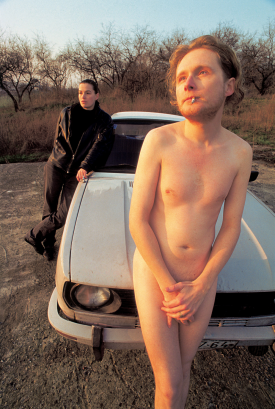
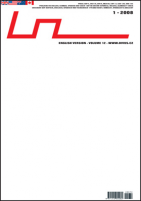

















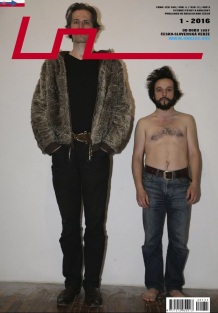





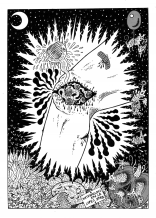

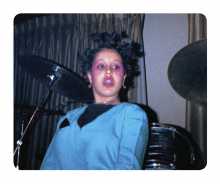


 New book by I.M.Jirous in English at our online bookshop.
New book by I.M.Jirous in English at our online bookshop.
Comments
Add new comment